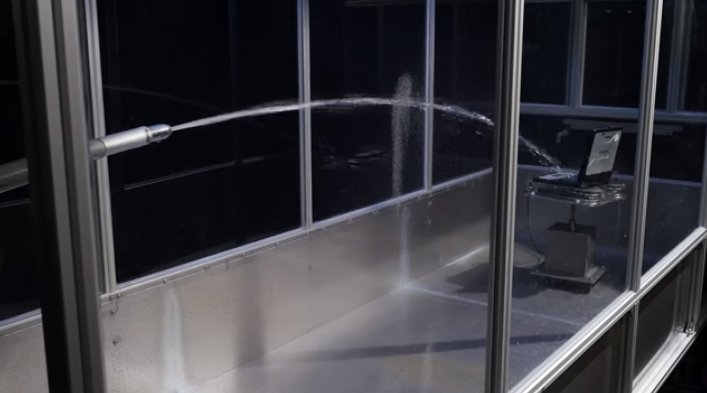Ingress Protection Ratings: Cracking the Code
Posted by TJ Supper on 24th Oct 2023
Rugged laptops are built to withstand some of the harshest conditions you can throw at them. However, you will find that not all rugged laptops are created equal. Luckily, most rugged laptops are classified by an IP rating, or Ingress Protection rating, which measures the resistance of a device to dust, water, and other debris. This is crucial for rugged laptops, which demand a much higher degree of protection against the elements than a consumer-grade laptop would.
The IP Rating System
The ultimate goal of the IP rating system is to provide the user with more detailed marketing information. Prior to the adoption of the IP rating system, expressions like waterproof and dust-resistant were used to describe different devices, but these terms were vague and unreliable. For example, you wouldn't know if a device was waterproof unless you tried it; it could indicate anything from being able to withstand a light spray of water to being fully submerged. Fortunately, the IP rating system removed any ambiguity from the system and assigned a digit to each level of protection. Each character that follows after the letters "IP" has a significant meaning and may give you an idea of how durable a rugged laptop is.
A typical IP code usually begins with the letters "IP" and is always followed by two significant characters. The first two significant characters may be followed by up to two additional, optional characters. When not enough information has been gathered to classify the device's level of protection, the letter X is used in place of the character.
Solid Particle Ingress Protection

The first character following the letters "IP" denotes the degree of defense the device’s enclosure offers against potentially dangerous components and solid foreign objects. The character representing solid particle protection ranges from 0 to 6, where 6 indicates that the enclosure is impervious to dust. At the same time, a rating of 0 means that the enclosure has no protection and is completely susceptible to dust, debris, and other solid foreign objects. Interestingly, solid particle protection doesn’t start protecting against dust until you reach level 5 on the scale of protection; the previous levels of protection protect enclosures from objects like body parts, tools, wires, and ants.
Water Ingress Protection
The second character following the letters “IP” informs you how well protected your device is against water ingress. Scaling from 0 to 9K, the water ingress rating measures 9K enclosures to have the ability to take on powerful high-pressure, high-temperature water jets from close range. In contrast, a rating of 0 provides no protection against the ingress of water whatsoever. Typically, if something is rated IP65 to IP67, it’s commonly considered “waterproof”, but there are still even greater water resistance levels at higher Ingress Protection ratings. At levels 7 and 8, you should be able to completely submerge your device without worrying about water entering the enclosure and damaging the device.
Body and Tool Ingress Protection
The next character is exceedingly uncommon since it is frequently left out or never used. It refers to securing personnel from exposure to potentially dangerous components using their bodies or tools. The letters A, B, C, and D are employed to signify these safeguards; each letter stands for a different body part or tool.
Miscellaneous Ingress Protection
The final character is also commonly omitted. This character provides additional information about what the device has to offer. If the device has the letter F in its IP rating, it is also oil-resistant. This rating is typically given to objects covered in rubber, which, under normal circumstances, would absorb oil and swell. A device with an IP rating of H can tolerate voltage surges of more than 50kV. High-voltage cables are an excellent example of where you'd see this rating. A rating of M signifies that the device’s functionality was tested while fully submerged in water and determined to be operational. This IP rating is commonly found on actuators. The letter S at the end of an IP rating denotes that, during a water test, no movement could be found. This type of rating can typically be found on various types of switches. The final letter, W, indicates that the device is weatherproof. Weatherproof devices offer defense from vertically dropping rain, spray, and light wind that can blow debris onto the device.
Securing your Assets with a Rugged Laptop
Now, what does this all mean in terms of a rugged laptop? A rugged laptop’s Ingress Protection rating sets it apart from traditional laptops. Even in the most extreme circumstances, rugged laptops graded by the Ingress Protection Rating system can secure critical data and applications from solid and liquid particles. Consider that not all rugged laptops are built to equal standards and that the degree of protection a rugged laptop can provide could make or break the ability to get a job done. With that said, it is crucial that when picking out a rugged laptop, you select the one that best suits your needs. Whether you’re out on open waters or elbow deep in a puddle of oil, don’t let the IP Rating of your laptop be the shortcoming in your operation; get ahead of the game and make sure you have a laptop that can withstand everything you need it to.
(Not sure what rugged laptop meets what needs? Fill out our Selections Assistance Form, and let us help you pick out the perfect laptop.)


